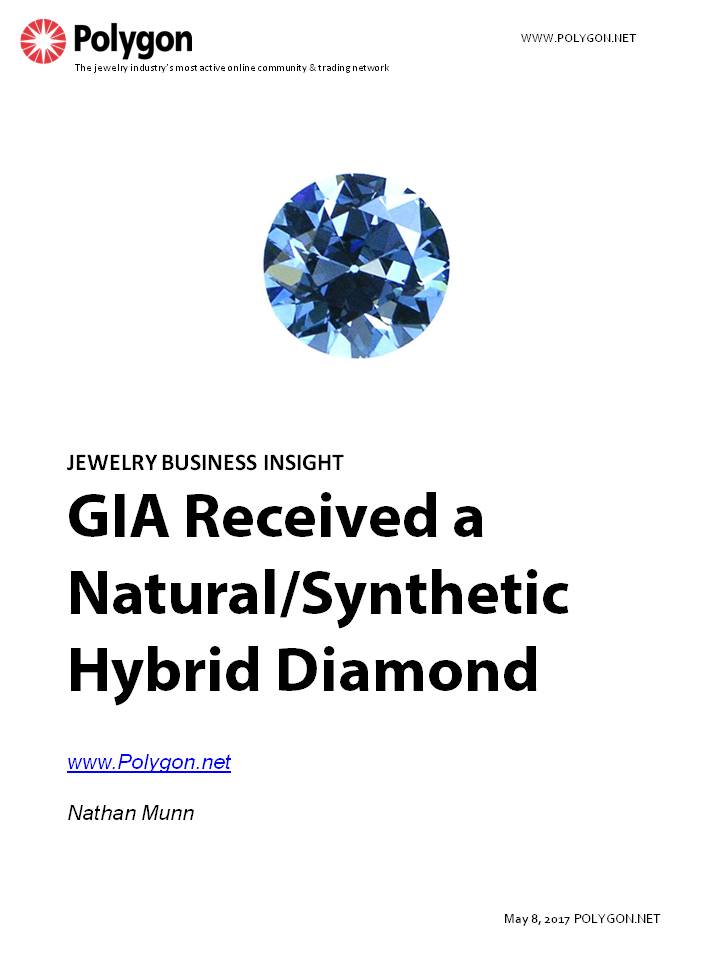GIA Received an Undisclosed Natural/Synthetic Hybrid Diamond

When the Gemological Institute of America (GIA) laboratory in New York graded a 0.33 carat fancy blue diamond earlier this year, their initial evaluation didn’t reveal anything out of the ordinary. But upon closer inspection, GIA scientists noticed an odd combination of nitrogen and boron defects, as well as something extremely rare: the stone exhibited qualities of both type Ia and IIb diamond.
The stone’s unusual composition led scientists do investigate further, and what they found was unprecedented. The fancy blue turned out to be a natural colorless diamond, wrapped in a thin CVD (Chemical Vapor Deposition) coating that gave the stone its coloring.
This hybrid natural/synthetic diamond - which had been sent to GIA for grading without any mention of the CVD alteration – is the first of its kind identified by the lab.
“Mixed type Ia and IIb diamond occurs very rarely in nature,” says the GIA report about the stone, identifying the clue that spurred scientists to investigate further. “The thin layer of type IIb CVD synthetic diamond on the top of this stone effectively introduced fancy blue color when viewed from its table.”
While altering a diamond to make it appear more valuable than it is isn’t a new tactic, adding a layer of synthetic diamond growth to a natural stone represents a sophisticated new approach for fraud artists. GIA scientists worry that this approach could gain popularity and warn that the problem may not be limited to colored stones.
“Examination of this fancy-colored composite diamond indicated that similar challenges could exist for colorless and near-colorless diamonds,” the report concludes.
The number of undisclosed synthetics mixed into parcels of supposedly natural melee is on the rise. In March, the GIA lab in Mumbai identified more than 100 synthetic diamonds in a package of 323 stones, raising concerns that fraudsters are getting more brazen in mixing lab-grown stones into parcels of natural melee.
The increasing presence of undisclosed synthetics in the supply chain has prompted GIA and several other companies to design and market sophisticated devices to detect lab-grown stones, which can be created using several methods including CVD and HPHT (High Pressure, High Temperature).
Nathan Munn | Polygon.net






